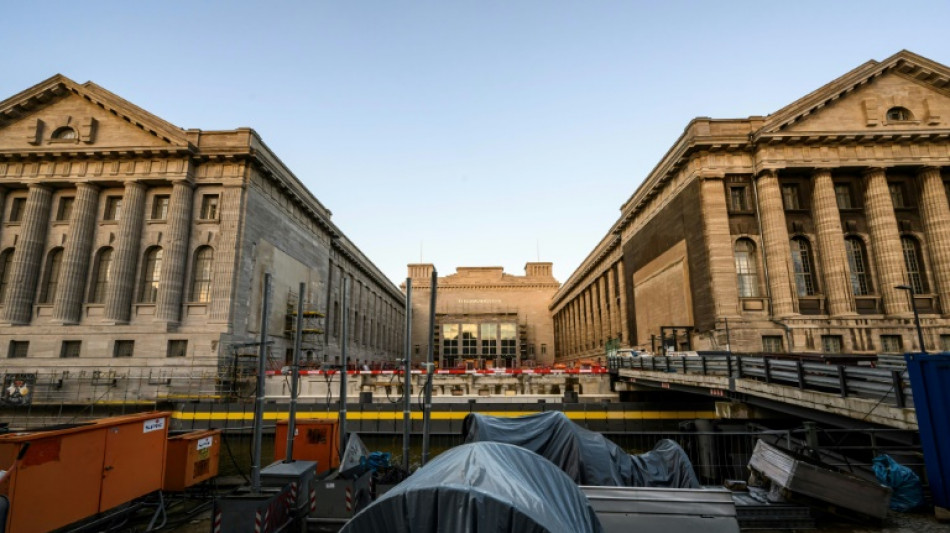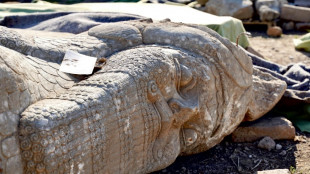

Babylon Berlin: antiquities museum shuts for 14-year facelift
One of Berlin's top tourist attractions, the Pergamon Museum and its world-class collection of antiquities, will close this month for a top-to-bottom restoration not due to be completed before 2037.
The institution on the German capital's UNESCO-listed Museum Island houses treasures including the Great Altar of Pergamon, built in the second century BC, the 2,600-year-old Ishtar Gate of Babylon and a vast millennium-spanning collection of Islamic art.
The museum, which opened in 1930 and was named for the Ancient Greek masterpiece, attracts more than one million visitors a year when all its exhibits are accessible.
The impending 14-year closure beginning on October 23 has prompted a rush by Berliners and tourists alike to catch one last glimpse.
Gudrun von Wysiecki, who grew up on the western side of the Berlin Wall, said she began crossing into the Communist east when it became possible in the 1970s just to see the Pergamon Museum.
"I've always loved this place. Seeing it for the first time was an absolute epiphany," the 75-year-old retired teacher told AFP, standing in the shadow of the ancient Roman Market Gate of Miletus.
"We were very lucky to get some of the last tickets this week. At my age, who knows if I'll be alive for the reopening."
- 'In bad shape' -
German archaeologists discovered the ruins of the Pergamon Altar between 1878 and 1886 and sent them back to Berlin based on an agreement between the German government and the Ottoman Empire.
Its reconstruction took until 1902.
The temple-like museum building was erected to showcase the ornate altar and the Ishtar Gate, with the spectacular lion reliefs of its Processional Way, to the fullest dramatic effect.
However the strains of time and the sheer weight of the collections, resting on a porous Ice Age riverbed, have caused the museum to crumble.
Stabilising and reinforcing the more than century-old underground concrete foundations are a Herculean task, helping to explain the extraordinary duration and estimated 1.5-billion-euro ($1.6-billion) cost of the renovation.
Wear and tear across the decades, combined with lasting World War II damage, have led to streaming leaks when it rains, said Barbara Helwing, director of the Ancient Near East Museum housed in the building.
She said the repairs were "urgently necessary" to protect the precious collections and ensure visitors' safety.
"The building is in really bad shape and it's sinking, which is why we're not only sad that it's closing for so long," she said.
Critics however have attacked the eye-watering cost of the makeover and the fact that, apart from a few solar panels, its plans do not include a "green" overhaul.
"The completely renovated Pergamon Museum, when it opens in 2037, will in climate technology and energy terms be a building from the fossil-fuelled past," architecture critic Nikolaus Bernau wrote in weekly Die Zeit.
- Restitution demands -
Culture experts also say with advances in the restitution debate and more Western countries acknowledging the rightful owners abroad of their collections, claims for the Pergamon holdings could grow.
Zeynep Boz, an archaeologist at the Turkish culture ministry, told the daily Tagesspiegel last month that she questioned the legality of the German ownership claims and believed the altar itself should return to the "sunlight of Pergamon" in northwestern Turkey.
Helwing admitted the issue was "difficult" and said research on the provenance of the museum's collections would continue during the renovation.
The north wing was already closed for renovations in 2012 as part of a Museum Island "master plan" to make its five buildings fit for the 21st century and interconnected with an underground "archaeological promenade".
The altar disappeared behind scaffolding in 2014. It will be the first to reopen -- in 2027, if all goes according to plan.
Thousands of artefacts -- sculptures, urns, carpets and tablets -- must now be removed from their display cases, wrapped and taken to warehouses while a select few will be lent to other institutions, a process that alone will take a year, according to Helwing.
The biggest monuments, such as the Ishtar Gate, will stay put as the workers move in, protected by cladding until their grand reopening.
J.Gustafsson--RTC



